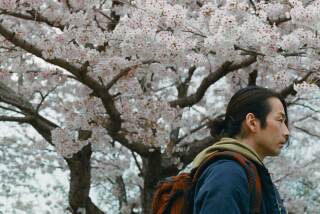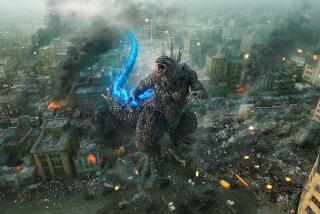Fan Favorite ‘Akira’ Really Blazes Now
Katsuhiro Otomo’s dark, alienated “Akira” (1988) is widely credited with creating a mass audience for Japanese animation in America. It has been a perennial favorite on college campuses and in revival houses, despite a bad English dub that made its convoluted story all but incomprehensible. Now it’s being released in a much-improved DVD version.
The film is set in 2019, 31 years after Tokyo was destroyed during World War III. The glittering metropolis of Neo-Tokyo is built on ruins, physically and morally: Beneath its opulent towers lies a gritty slum inhabited by cult members, gangs and anarchists who are brutally suppressed by the police and military.
Tetsuo, the weakest member of a teenage biker gang, is captured by the military and used in biomedical experiments. The mysterious Akira was subjected to similar experiments three decades earlier and gained the powers that shattered Tokyo, but Colonel Shikishima believes he can control the results.
As is often the case with anime , the ending of the film leaves many important questions unanswered. But the ambiguities have sustained more than a decade of debate and discussion in student lounges, coffee shops and online bulletin boards. (There are more than three dozen Web sites devoted to “Akira” in English, Spanish, French, Italian and Japanese.)
Pioneer Entertainment reportedly spent more than $1 million preparing the DVD release, and the results are impressive. Dust, dirt and scratches were removed digitally, and the color has been recalibrated. The original prints of “Akira” didn’t look this good. Equally important, a new English translation with better vocal performances makes the story easier to follow.
The two-disc special edition includes a wealth of extras. When a drawing of a pharmaceutical capsule appears in the lower left-hand corner of the screen in “capsule mode,” the viewer can click “enter” to get a brief explanation of some detail, such as the translation of a sign in Japanese. A Japanese making-of film, “The Akira Production Report,” offers interviews with members of the crew, who explain the basic animation process; “Restoration” provides a superficial behind-the-scenes look at restoring the film.
More impressive is the “Production Materials” section, which includes more than 4,500 still images of storyboards, character designs, backgrounds and sketches.
Otomo was not the first anime director to focus on an alienated antihero to warn against the dangers of tampering with human biology or to set a story in a “Blade Runner”-influenced dystopia. But he introduced those themes to American audiences and presented them with exceptional skill: The cutting in the motorcycle chases has frequently been imitated.
Otomo’s vision is violent, angry and often ugly, but it is also arresting and powerful. Thirteen years after its initial release, “Akira” remains a watershed film in the history of Japanese animation and anime fandom in America.
More to Read
The biggest entertainment stories
Get our big stories about Hollywood, film, television, music, arts, culture and more right in your inbox as soon as they publish.
You may occasionally receive promotional content from the Los Angeles Times.










